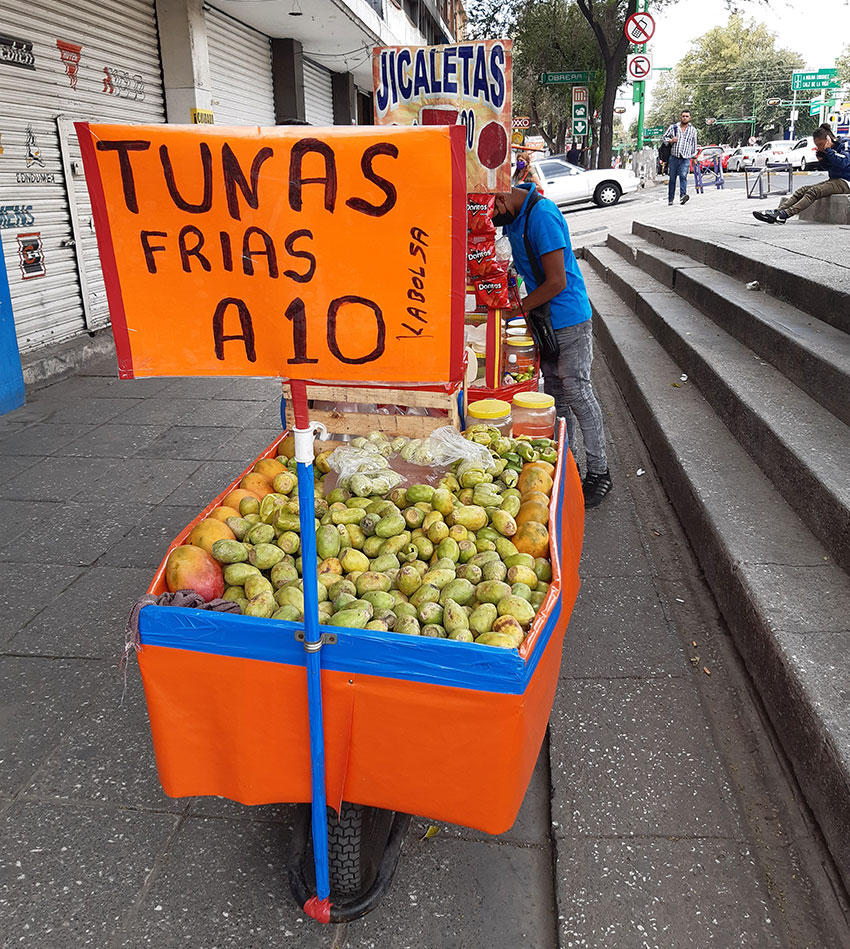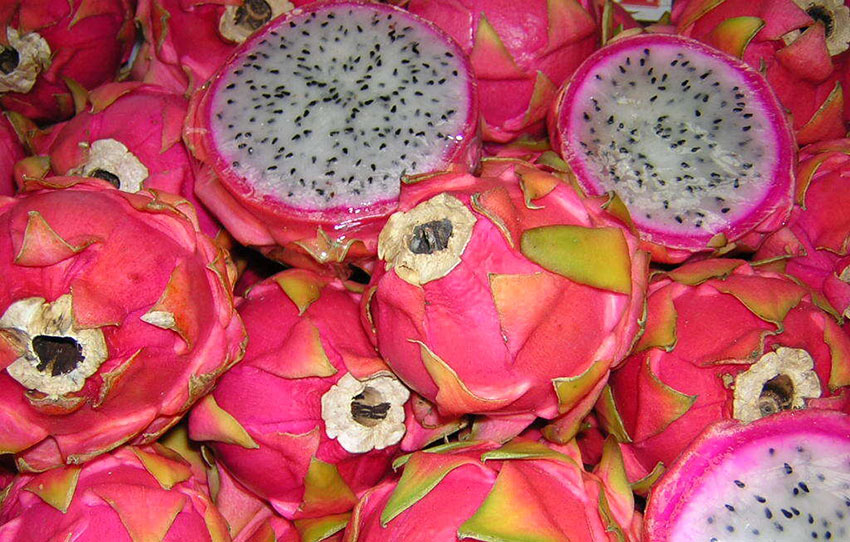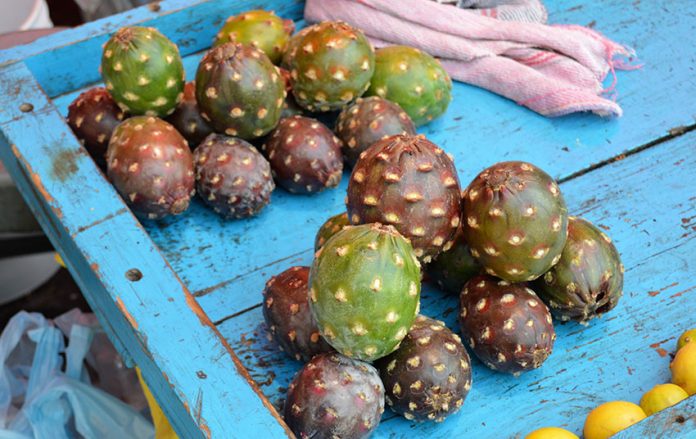Growing up in New Jersey in the 1970s, I would have thought the idea of cacti producing anything edible to be crazy. It turns out that all cactus species produce fruit you can eat, and it happens that we are currently in one of the major seasons for cactus fruit in Mexico.
In general, these fruits considered quite healthy, often containing significant levels of vitamin C, other antioxidants, fiber, B vitamins and even some minerals. They tend to contain less sugar and more water than other fruits so are often recommended for diabetics. Some cactus is economically important as a commercial crop, and others are only harvested wild as a local delicacy.
By far the most common cactus fruit grown and sold in Mexico is the tuna or prickly pear. Mexico has 20,000 farmers harvesting about 350 tonnes yearly, with most grown in Zacatecas, Puebla, and Hidalgo. It is so ubiquitous that the name for it can be used by extension to all cactus fruit.
For our purposes, tuna will be used only to describe the sweet varieties of fruit that come from the Opuntia cactus family, better known as the paddle cactus or nopal. It is cultivated all over central and northern Mexico as the plant itself is eaten along with the fruit. There are over 60 types of Opuntia in Mexico, all slightly different from one another.
Tunas are generally classed as two types, blanca (white) and roja (red), depending on whether the species produces betalain, the same antioxidant found in beets. (There is a less common orange variety, which is like the red but less intense.) All have a husk, which may or may not be easily peeled, and the seeds may be clustered in the center or interspersed in the flesh.

They are not especially sweet, especially compared to most tropical fruits, and depending on the variety and location are available between April to October. At the height of their season, they fill traditional markets and are often sold on the streets as a snack with chile pepper and lime. They can also be used as the base for salsas, juices, fruit drinks, compotes, liquors, and gelatins.
There is a sour variety of the tuna with the name xoconostle (Nahual: sour tuna) from the Opuntia joconostle. It is popularly distinguished from tunas because it is available year-round, and generally only in the center-north of the country. Its use is different from other tunas in that it is not only used in sweet preparations but savory ones as well. The most noted of these is mole de olla, but there are regional specialties such as the xoconostle soup of Pénjamo, Guanajuato.
Another confusion is with fruits called pitaya or pitahaya. Both are used to describe fruits from two cactus species. The first is the Hylocereus family, found growing vine-like in various arid and semi-arid regions. The best known of this fruit is from the Hylocereus undatus and for clarity, we will use its secondary name of dragonfruit. The fruit’s husk lacks thorns, has reptilian-like scales, and comes in red, magenta, or yellow.
The pulp is white or red with tiny black seeds. It is typically eaten raw but can be whipped in a blender to make a beverage. This fruit is relatively easy to grow and there has been some successful exportation to Asia and the Middle East.
The other pitaya is fruit from the columnal Stenocereus cactus family. They are sometimes called pitaya tunas, etchos or echos. The cactus grows like the saguaro and organ cactus but is smaller. The fruit is like a round tuna and has thorns. The husk can be bright red or yellow, and the pulp can be white or red, often sweet with many tiny seeds.
This fruit mostly grows in the arid regions of Oaxaca and southern Puebla, but varieties can be found in Michoacan, Jalisco, Zacatecas, Sinaloa, Sonora, and Baja California Sur. Most fruit is produced in family gardens or collected in the wild. They are also used much the same way as tunas.

The garambullo (Myrtillocactus geometrizans) is a small fruit that looks like very dark cherries or blueberries and has a flavor similar to cranberries. Their range extends from parts of Oaxaca northeast into Tamaulipas and it is available between April and June. It is popular in the Bajío region in central Mexico and strongly associated with Otomí culture. They are often used to make liquors, ices/ice cream, marmalades, and candies. They are sometimes used in natural therapies for cancer and diabetes.
One important but highly regional fruit is that from the saguaro (Carnegiea gigantea) cactus of the Sonoran Desert. It is found in Sonora and Arizona and has been an important food for millennia for the Pima, Papago, and Tohono O’odam peoples. Its harvest has been used to mark the new year, with camps set up in June for this purpose. The fruit has a slightly nutty flavor, and can be used to make marmalade, syrup, juice, and wine. When dried and ground, it can be used to make cakes.
There are other regionally important cactus fruits in Mexico. Both the flowers and fruit of the barrel cactus are edible. Fruits from the Epiphyllum and Cactus orquidea families are small but also eaten. Copao (Eulychinia acida) is a cactus native to Chile that has made it way up to Mexico. Its fruit is characterized by an intense green color.
Leigh Thelmadatter arrived in Mexico 17 years ago and fell in love with the land and the culture. She publishes a blog called Creative Hands of Mexico and her first book, Mexican Cartonería: Paper, Paste and Fiesta, was published last year. Her culture blog appears weekly on Mexico News Daily.
